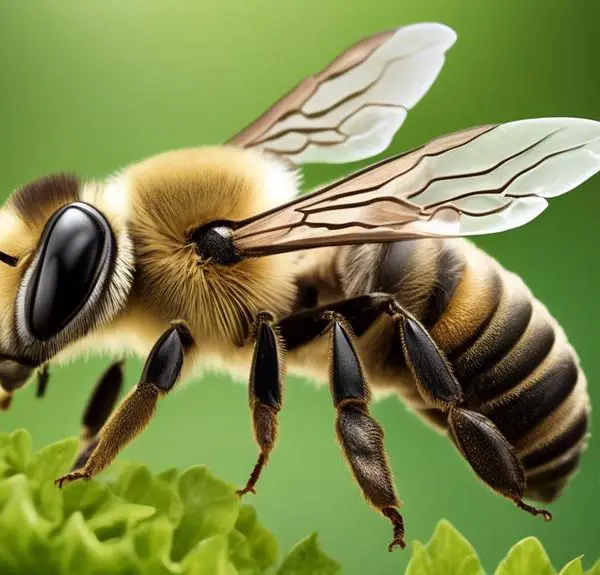P'ondering if leaf cutter bees are aggressive? Dive into the intricacies of their behavior and dispel common misconceptions in this enlightening article.

Are Leaf Cutter Bees Aggressive
Just as a book shouldn't be judged by its cover, a bee shouldn't be judged by its buzz.
You've probably heard of leaf cutter bees and wondered if they're as aggressive as their reputation suggests. After all, they're known for their distinct leaf-cutting behavior, which can appear menacing to some.
But is this habit indicative of aggression, or is it merely a misunderstood aspect of their intriguing lifecycle? It's important to accurately interpret the behaviors of these small creatures, as misconceptions can often lead to unnecessary fear.
As we venture further, you might find yourselves surprised by the complexity of these seemingly simple insects.
Key Takeaways
- Leaf cutter bees are solitary creatures and do not live in colonies.
- Leaf cutter bees are non-aggressive and rarely sting unless provoked.
- Leaf cutter bees' main focus is gathering leaves for their nests, not interacting with humans.
- Misinterpreting bee behavior as aggressive can harm the relationship between humans and bees, and hinder conservation efforts.
Understanding Leaf Cutter Bees
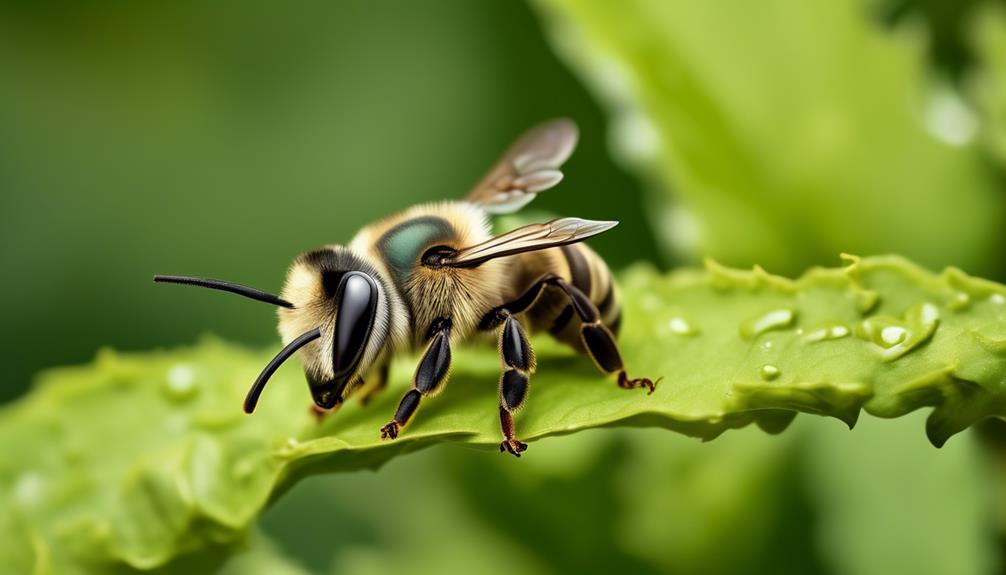
To fully grasp the behavior of leaf cutter bees, it's essential to delve into their unique biology and lifestyle. You'll find these bees aren't your typical honeybee. They're solitary creatures, meaning they don't live in colonies. Each female is fertile and builds her nest independently.
These bees are named for their unique behavior of cutting leaves to create their nests. Using their sharp mandibles, they excise precise circular pieces from leaves. It's not a random act of destruction; they use these leaf fragments to construct intricate, cell-like structures within their nests.
Their diet also sets them apart. Unlike honeybees who feed on nectar, leaf cutter bees feed on pollen. They're classified as megachilidae, meaning 'large jaws', a feature that helps them efficiently gather pollen.
The life cycle of leaf cutter bees is equally fascinating. Each female lays an egg within a leafy cell, depositing a pollen loaf for the larva to consume once it hatches. After the larva metamorphoses into an adult bee, it chews its way out of the leafy cell.
Understanding these aspects of their biology and lifestyle helps demystify their behavior, including their level of aggression.
Leaf Cutter Bees' Unique Behavior

Delving deeper into the unique behaviors of leaf cutter bees, you'll find that their solitary lifestyle and peculiar nesting habits are just the tip of the iceberg.
Unlike honeybees that live in colonies, leaf cutter bees are loners, each female finding a suitable nesting site and laying her eggs therein.
Their nesting habits are particularly interesting. They don't build conventional hives, instead, they prefer tubular spaces like hollow twigs or burrows in the ground. They line the inner walls of these spaces with cut leaf fragments, hence their name. This leafy interior provides a secure and comfortable environment for their eggs.
Leaf cutter bees are also well known for their leaf-cutting behavior. They don't just pick any leaf, but rather choose the freshest, healthiest leaves. They cut precise, circular pieces using their strong mandibles, which they carry back to their nests. This behavior isn't destructive, but a creative adaptation for survival.
Lastly, leaf cutter bees exhibit a unique pollination method. As they crawl around flowers, pollen sticks to their furry underbelly, facilitating cross-pollination. This makes them great contributors to biodiversity.
Aggression in Bees: A General Overview
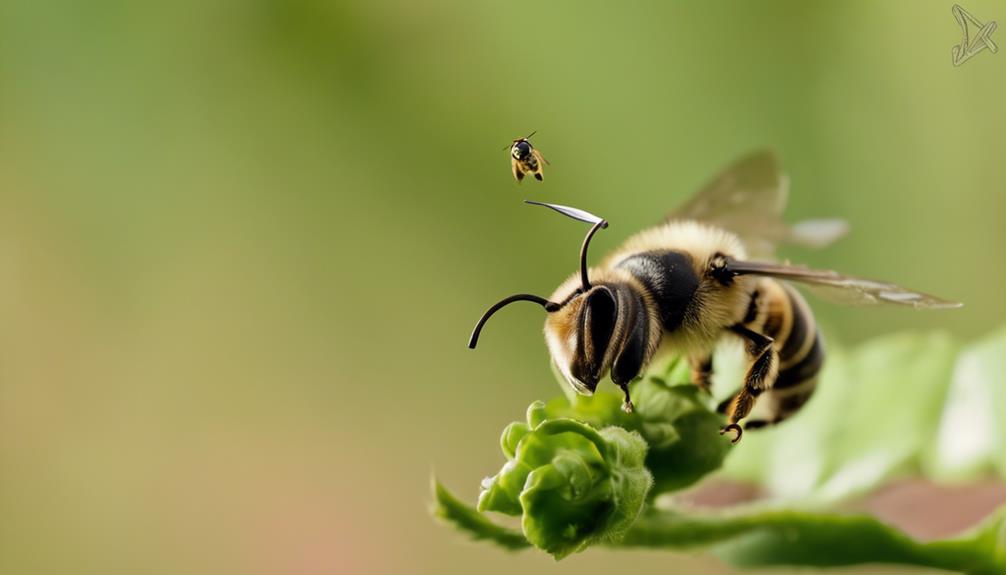
While understanding the peculiarities of leaf cutter bees' behavior is intriguing, it's equally important to consider the broader topic of aggression in bees, which varies greatly across species.
You've probably heard of the Africanized honey bee, also known as the 'killer bee.' This species is notoriously aggressive, reacting to disturbances near their hives with a mass attack that's far more intense than that of their European counterparts. Yet, not all bees exhibit such aggression. Some, like the leaf cutter bee, are more docile.
Bees' aggression levels are largely influenced by their roles within the colony. Worker bees, responsible for defence, are usually the most aggressive as they're protecting the hive. They use their stingers as weapons, often dying in the process. On the other hand, drones, male bees that mate with the queen, are incapable of stinging and hence, non-aggressive.
Aggression can also be influenced by environmental factors, like scarcity of food or a threat to the hive. Some species may become more aggressive if their hive is disturbed or if they feel threatened.
Understanding these complexities can help you better appreciate bees and navigate safely around them.
Are Leaf Cutter Bees Really Aggressive?
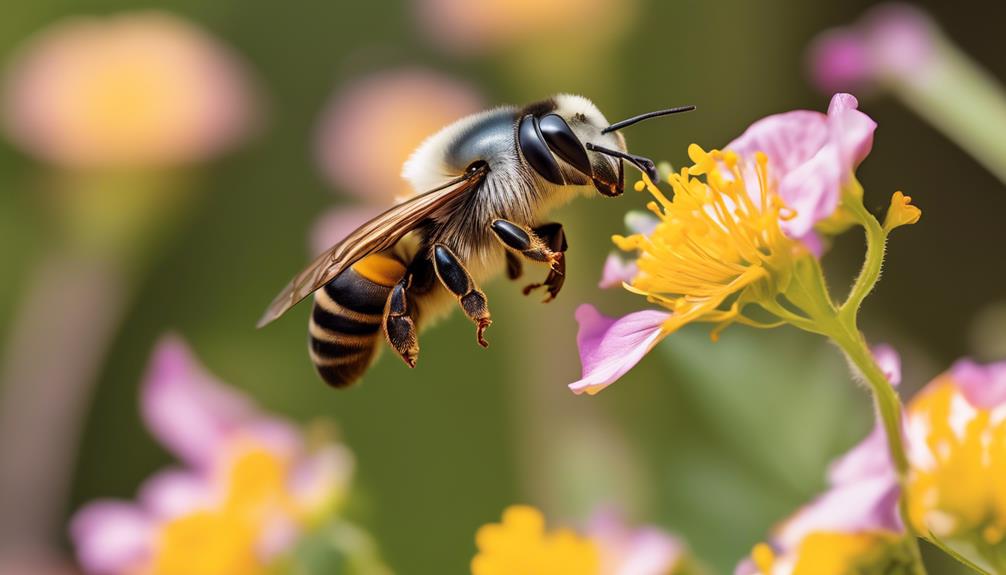
Contrary to common belief, leaf cutter bees, despite their intimidating name and appearance, aren't particularly aggressive. In fact, they're among the most docile of bee species. Their primary focus isn't on defense, but rather on collecting leaves and flowers to build their nests. They're solitary bees, meaning they don't live in hives or colonies like honeybees or bumblebees.
When you encounter a leaf cutter bee, you'll likely see it cutting precise circles out of leaves. This behavior might seem destructive, but it's simply their way of gathering materials for their nests. They don't sting unless provoked, and even then, their sting is less painful than that of other bee species.
The aggression often associated with bees usually comes from hive-dwelling species that are protecting their colony. Leaf cutter bees, however, don't have a colony to protect. So, you can observe them without fear of aggression. Remember, they're more interested in leaves than in humans.
Therefore, the perceived aggressiveness of leaf cutter bees is largely a misconception. These hardworking insects are more concerned with their tasks than with human interference. So, don't let their ominous name fool you.
Impact of Misinterpreting Bee Behavior
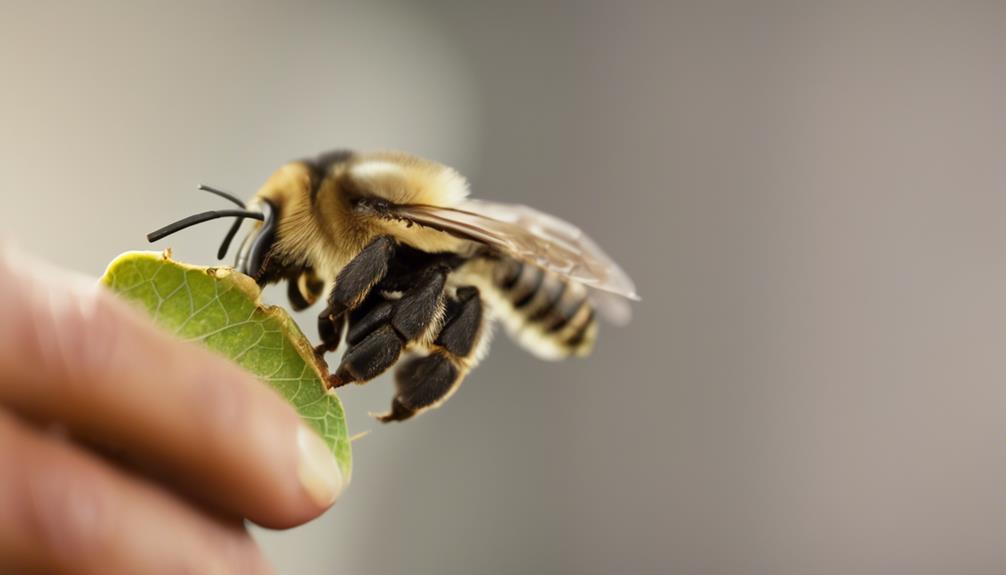
How does misinterpreting the behavior of bees, like the leaf cutter species, impact our interactions with these essential pollinators?
Misinterpretations can lead you to perceive them as aggressive, damaging your relationship with these vital creatures.
When you misread their actions, such as their buzzing around you or their occasional contact with your skin, as signs of aggression, you're likely to react with fear or hostility. This response can result in unnecessary harm to the bees and jeopardize your personal safety. It's critical to understand that leaf cutter bees, like most bee species, aren't naturally aggressive. Their contact with humans often happens when they feel threatened or disturbed.
These misinterpretations can also lead to broader societal impacts. When fear-based narratives about bees spread, they can influence public support for conservation efforts. This is concerning because bees, including leaf cutters, play a crucial role in pollinating our plants, a function that's key to our food production system and broader ecosystem health.
Conclusion
So, you've learned about leaf cutter bees and their unique behaviors. While generally, some bee species can be aggressive, leaf cutter bees aren't one of them. Misinterpreting their behavior as 'aggression' can lead to unnecessary fear and harm to these beneficial insects.
Understanding and respecting their role in our ecosystem is crucial. Remember, they're more interested in your plants than they're in you! They're not out to get you, they're just busy doing their job.

